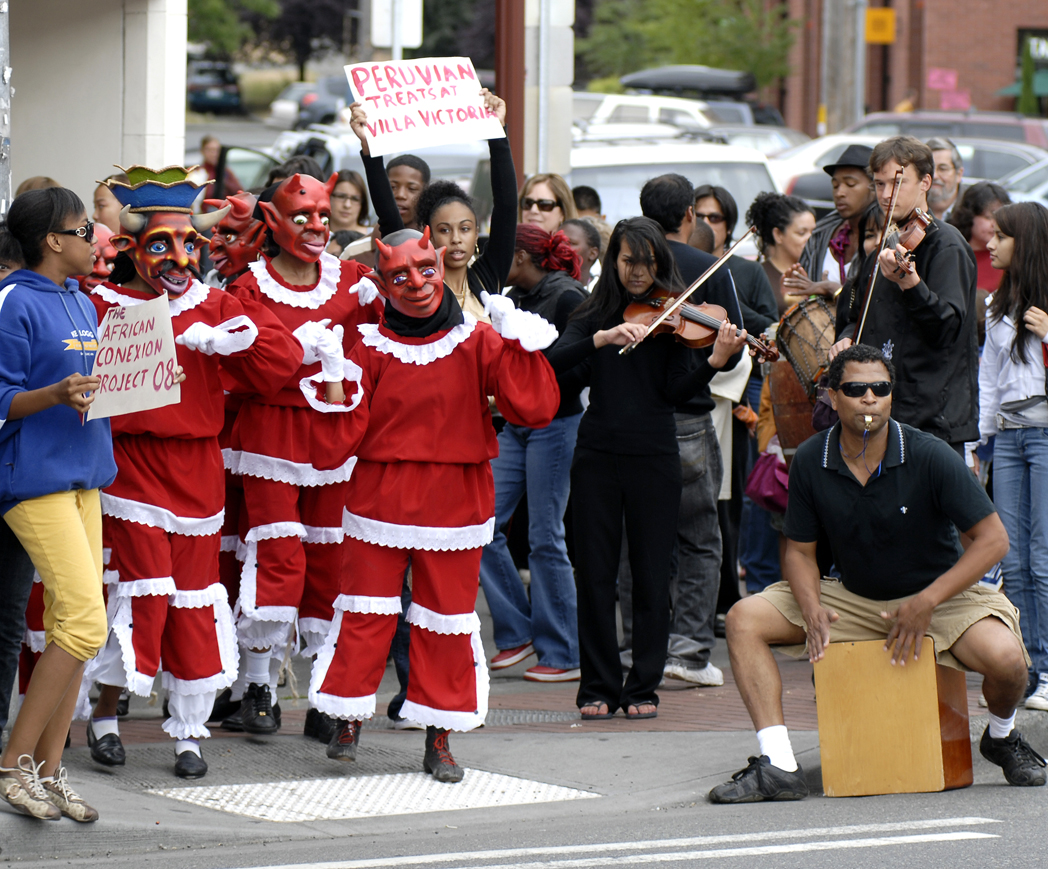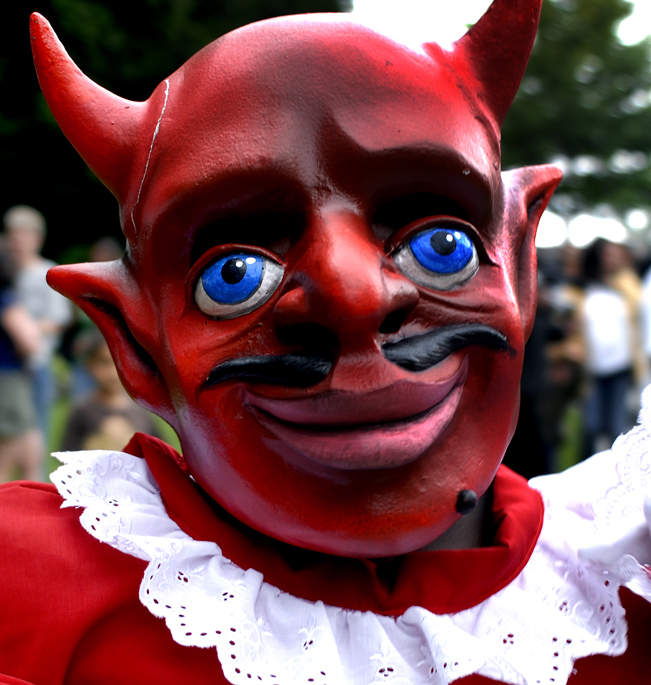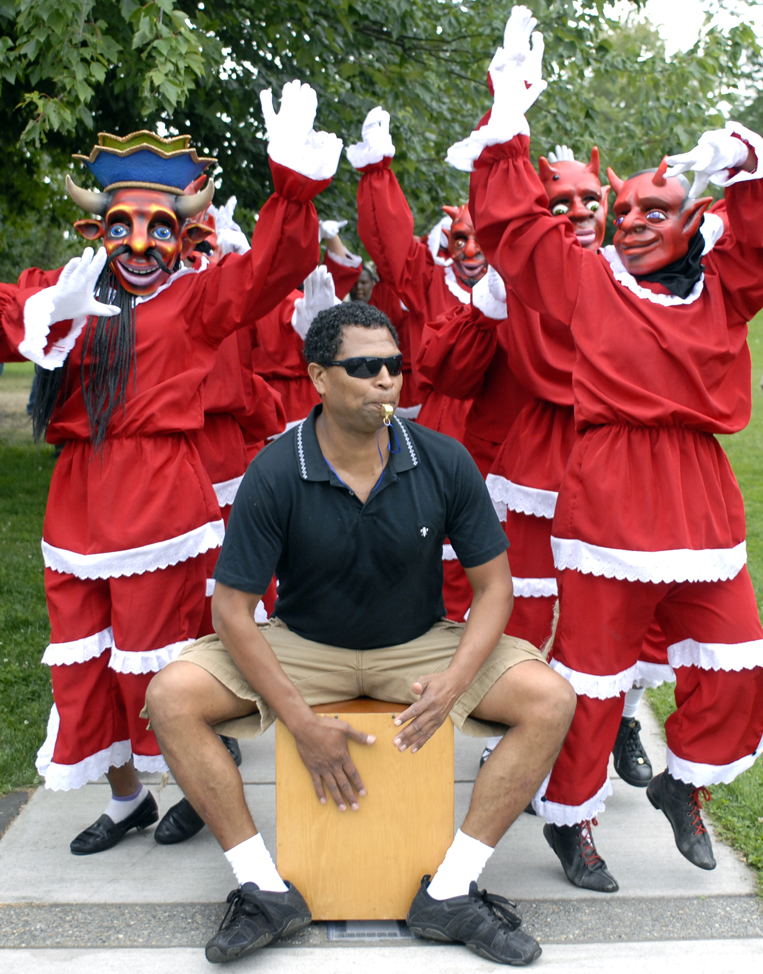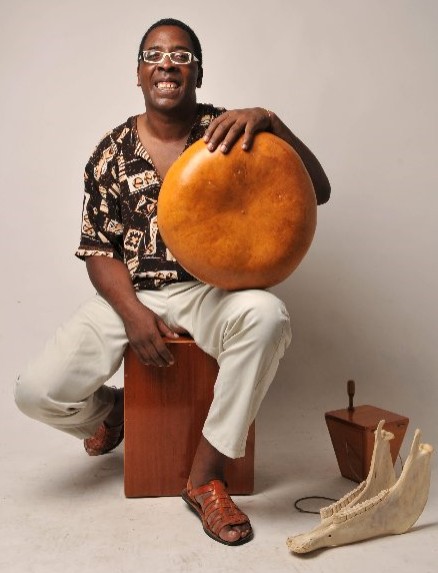Announced: Parade Route for Devil’s Dance Parade in White Center – May 29th – 6 p.m.
The Parade Route for the Devil’s Dance has been announced: The Parade starts at El Paisano, on the corner of 15th Ave. SW and Roxbury, proceeds to La Fondita at SW 98th St., and then to Full Tilt Ice Cream at 9629 16th Avenue SW then to the Triangle at Roxbury/16th Ave. SW/Delridge and then from there to Cafe Rozella for a Muscial Performance. (Choreography by Monica Rojas, Ph.D.)
Afro-Peruvian Dance and Music: El Son De Los Diablos
NPR States, “Afro-Peruvian music has complex, sensual rhythms. Its instrumentation is spare, originally just nylon-string guitar, bass and a wooden box called cajon. When it started getting outside attention in the mid-’90s, it felt new. The music’s lean architecture and introspective mood differentiated it from the likes of salsa and merengue.”
“The people of the so-called Black Pacific were so far removed from their African origins that the creators of Afro-Peruvian music couldn’t rely much on cultural memory. So they created instruments, rhythms and a compelling musical aesthetic that was largely a product of their imaginations. The pride of Afro-Peruvian music is the lando, an elegant dance with intertwined rhythms and a seductive undertow.”
El Son De Los Diablos will feature the musicians behind Grammy Award Winner Susana Baca. Truly a unique experience of a hot new trend in Latin American Music.
Admission is FREE
AFRO PERUVIAN PERCUSSION; The Cajon
African slaves were brought over to the Spanish colony of Peru in the 16th century to work mainly in the gold and silver mines of the high Andes. However their physique was not suited to the high altitude and they died by the hundreds. Their Spanish or Creole (descendants of European settlers in Latin America) masters sent them to work in the milder climate of the desert coast, where they laboured in the large haciendas; private farms. It was in their small huts, on the packed dirt floors of the courtyards overrun with animals and in the fields of cane and sugar cane that Afro-Peruvian music, song and dance were born.
The beginnings of slavery in Peru were different from the rest of the Americas. Although in Brazil or Central and North American countries it was common to import large groups of slaves from the same African tribe, only small and geographically dispersed ethnic groups were brought to Peru. This was meant to discourage rebel movements around the tribal chiefs, and as such, made almost impossible the preservation of communal traditions. Without a common language or tribal authority to remind them of their roots, Peruvian slaves were progressively integrated into the culture and language of their new country. As a result Afro-Peruvian music is a unique blend of Spanish, Andean and African traditions.
Centuries old, this music started to gain recognition in Peru about 40 years ago and it has became popular in the last 25 years. It was born in the coastal barrios (suburbs) and towns and was reconstructed and resurrected thanks to the work of a few artists and historians. Because the Africans were forbidden from playing their own instruments, percussion instruments developed out of the simplest household appliances; spoons, kitchen chairs, table tops, boxes, handclaps, until it reached this century with the creation of the cajon as a specific instrument to play music.
The cajon which is a wooden-box in which the player sits on to play, is thought to have originated in Peru. The cajon is made out of hardwood with the front cover being of a very fine layer of plywood. The cajon has an open circle cut at the back of the instrument. The player sits and plays two main strokes as well as a few other variations. The main two consist of: the tone of the box which is played with the full palm in the middle of the “head” (this stroke is usually a bass or palm sound on a variety of African derived hand drums found around the world) and the slap which is played on the edge of the “head” of the instrument (this sound also part of the technique used in many hand drums around the world).
(A big thank you to Latino Cultural Magazine for the photographs.)
May 23rd, (Saturday), 7:30pm, Afro-Peruvian percussionist Juan Medrano Cotito releases his new CD “La Voz Del Cajon” at Langston Hughes Performing Arts Center.
$20 including CD.
These events are sponsored by AFrican ConeXion Project, 4Culture and Cafe Rozella.
Tags: Afro-Peruvian Music, Devil's Dance, Music, Son de los Diablos
You can follow any responses to this entry through the RSS 2.0 feed. Both comments and pings are currently closed.






May 20th, 2009 at 5:50 am
What time does it all start at?
May 20th, 2009 at 7:13 am
Verde, sorry about the omission. The event starts at 6 pm and will continue for an extended musical performance at Cafe Rozella.
May 20th, 2009 at 9:19 am
This sounds wonderful. Thanks to whoever organized this.